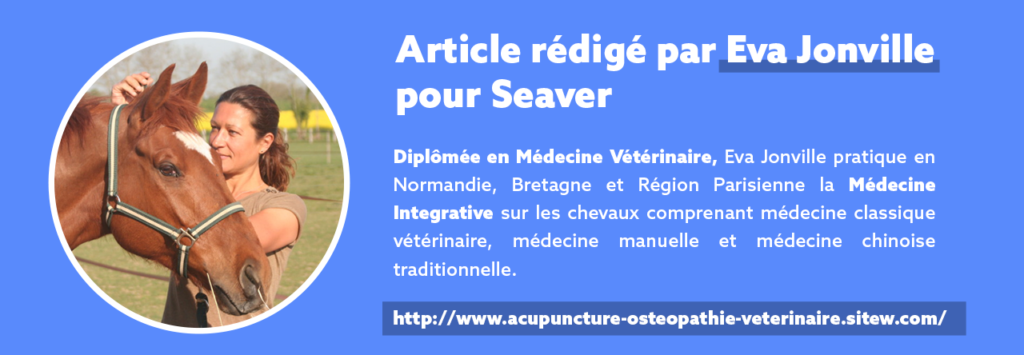jeudi, 9 juillet, 2020
Avec le développement de l’ostéopathie dans le milieu équin, un concept s’est répandu pour devenir très à la mode : “compensation”. C’est un terme devenu familier pour s’expliquer, en tant que cavalier, ce qui paraît logique (ou pas…) sur le défaut de locomotion de son cheval. À juste titre, ce terme est utilisé pour expliquer les conséquences dynamiques et/ou posturales d’une chaîne lésionnelle chez le cheval. Celle-ci se manifeste par des restrictions de mobilité à différents niveaux. Ces conséquences peuvent aboutir à des lésions dites secondaires : le plus souvent, des fixations musculaires ou articulaires, plus ou moins éloignées de la lésion primaire.
La lésion primaire peut être d’origine traumatique, ostéo-articulaire, tendino-musculaire, fasciale, viscérale ou même systémique (nerveuse ou endocrinienne par exemple). Le rôle de l’expert est de ne négliger aucun aspect dans son diagnostic. Remonter la chaîne lésionnelle peut s’avérer un exercice complexe qui nécessite l’intégration multifactorielle de données anatomiques, biodynamiques et physiologiques. Il s’agit de considérer le cheval dans son ensemble et comme un ensemble de systèmes qui interagissent, s’équilibrent et se COMPENSENT en permanence. Le but est de conserver cet état instable et si fragile qu’on appelle homéostasie.
Suite au confinement, l’histoire de Puccini nous permet de suivre une chaîne lésionnelle classique, et fréquente qui illustre ce propos sans trop de complexité.
L’article suivant a été rédigé par le Dr vétérinaire Eva Jonville. Pour mieux en saisir le sens, elle expose dans le paragraphe ci-dessous le déroulement de ses consultations :
“L’Acupuncture fait partie de mon approche première et occupe une place centrale dans mes consultations, construites sur une base de Médecine Traditionnelle Chinoise. J’ai recours à l’Ostéopathie ou Médecine Manuelle, de façon synergique et complémentaire, pour lever les fixations structurelles de type musculo-squelettiques lorsque cela est nécessaire.
Enfin, selon les troubles rencontrés, après une séance d’induction par les aiguilles d’acupuncture, je peux proposer la mise en place d’un traitement par pharmacopée chinoise. Il permet de prolonger les effets des aiguilles dans le temps, évitant ainsi des consultations rapprochées.
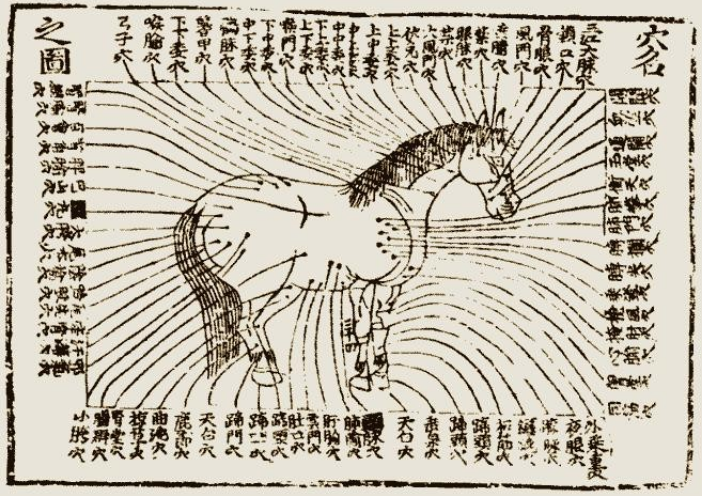
Le diagnostic s’opère et s’affine donc au travers d’un prisme à 3 facettes:
L’utilisation conjointe de l’ensemble de ces techniques les potentialisent réciproquement pour un maximum de résultats. Le but est d’offrir aux chevaux une médecine intégrative.
Ceci dit, il n’y a pas de consultation type. Chaque cheval me guide vers ses besoins, auxquels je me limite pour ne pas rompre l’équilibre ni la dynamique en place. Il s’agit d’être succinct et précis dans le choix de l’information donnée à l’organisme et la/ les techniques mises en oeuvre.
Ainsi le choix dans la méthode de traitement relève d’un diagnostic individualisé précis, d’une connaissance approfondie des techniques thérapeutiques, couronnés d’une expérience continuellement nourrie et enrichie.”
Puccini est un selle français de 9 ans, alezan à trois belles balzanes, deux antérieures, une postérieure. Il était travaillé régulièrement jusqu’au début du confinement – c’est un cheval de concours complet. Puis, il a traversé 6 semaines de pré et séances de longe dans une carrière en sable. Son propriétaire n’a pas pu lui rendre visite du 16 mars au 1er mai. Depuis la reprise, Puccini n’est ni boiteux, ni irrégulier, mais il semble que son mouvement d’épaule soit moins délié, surtout à droite. À l’obstacle, il ne passe plus aussi bien son garrot. La palpation révèle un garrot peu mobile et des zones de tensions dans le triceps brachial, des deux côtés.
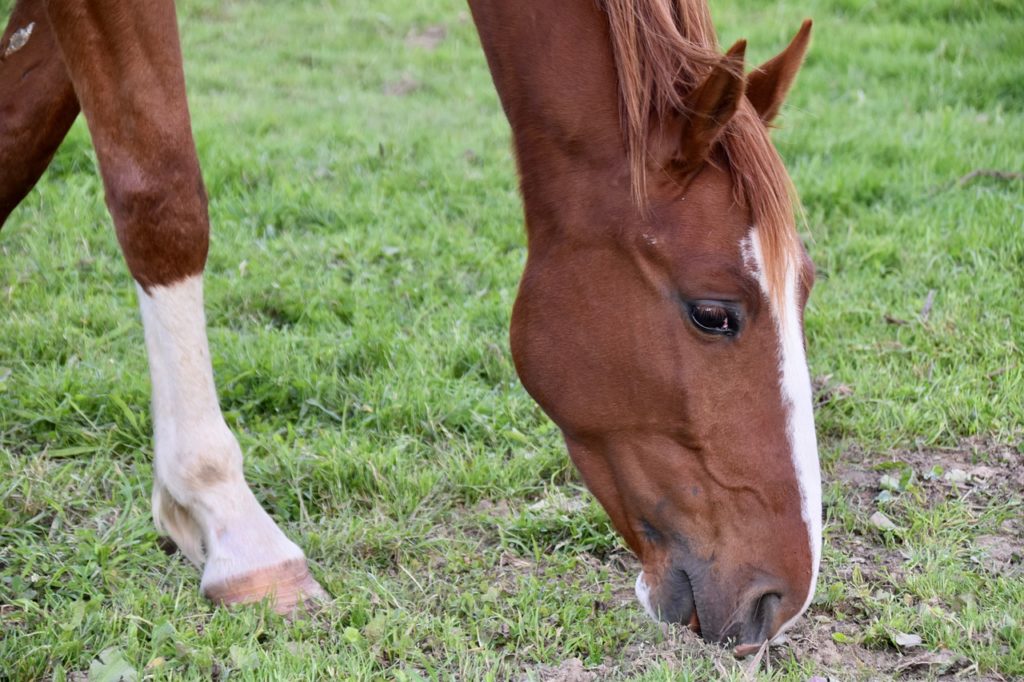
En observant ses pieds, on voit qu’il y a eu des éclats dans la paroi juste au-dessus des fers et que les pieds sont parés assez courts. Il n’y a pas de sensibilité anormale ni de chaleur au niveau des sabots, pas de pouls digité ni d’engorgement. Néanmoins, ses pieds blancs sont plus sensibles au test de la pince que le pied pigmenté. Le propriétaire confirme que Puccini est plus hésitant sur les sols caillouteux. Par ailleurs, il est ferré avec des plaques en période de concours. La lecture par palpation en acupuncture révèle des blocages à peu près symétriques sur les trois méridiens latéraux du membre antérieur (Gros Intestin, Triple Réchauffeur surtout à droite et Intestin grêle de chaque côté). Le diagnostic en ostéopathie est une fixation des 4ème et 5ème vertèbres thoraciques (garrot) et de l’épaule droite.
Des pieds.
Puccini, comme tous les chevaux de l’écurie, a été déferré pour la mise au pré en début de confinement. Puis, il a été ferré à nouveau fin avril en vue de reprendre son activité. Pendant ses semaines pieds nus, les sols étaient secs. Ses pieds blancs fragiles et cassants ne laissaient plus beaucoup de corne au maréchal pour la dernière ferrure.
Il se peut que Puccini ait souffert de ses pieds nus pendant plusieurs semaines et peut-être d’une ferrure un peu serrée les premiers jours. Quand son propriétaire est revenu début mai, Puccini n’avait plus mal aux pieds. En revanche, la gêne occasionnée dans ses pieds a généré des tensions musculaires suffisantes pour fixer un couple de vertèbres thoraciques et une épaule.
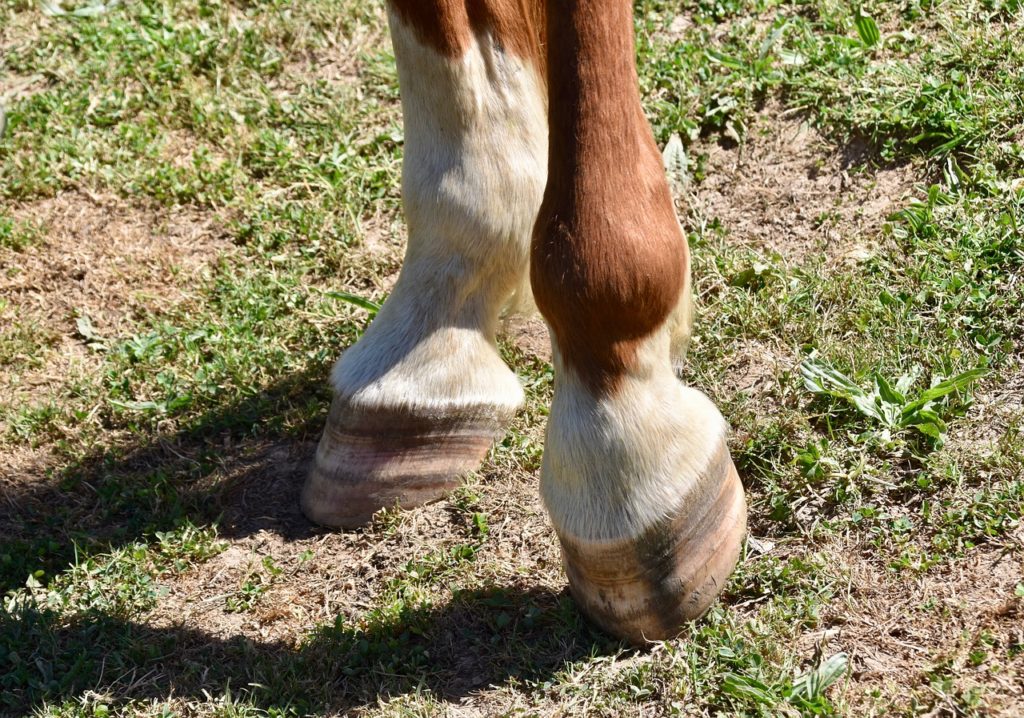
Les aiguilles d’acupuncture et la manipulation ostéopathique ont permis de restaurer la locomotion normale de Puccini. Le propriétaire est désormais attentif à étirer régulièrement les épaules de son cheval en attendant la prochaine ferrure où il mettra des plaques.
Pour opérer cet étirement de l’épaule, il faut se placer face à l’antérieur que l’on va mobiliser. Le regard est très important et dirigé vers l’arrière du cheval. Puis, il faut prendre le sabot et tendre la jambe en extension. Il faut faire attention à rester parallèle à l’axe longitudinal du cheval sans trop décoller le sabot du sol. L’épaule doit s’abaisser dans un mouvement crânial. On peut faire ce mouvement avant le travail en assouplissement. Il permet ainsi de dégager la scapula du quartier de la selle et de caler celle-ci “à sa place” derrière le garrot. Après le travail aussi, pour libérer les tensions dans le triceps brachial.
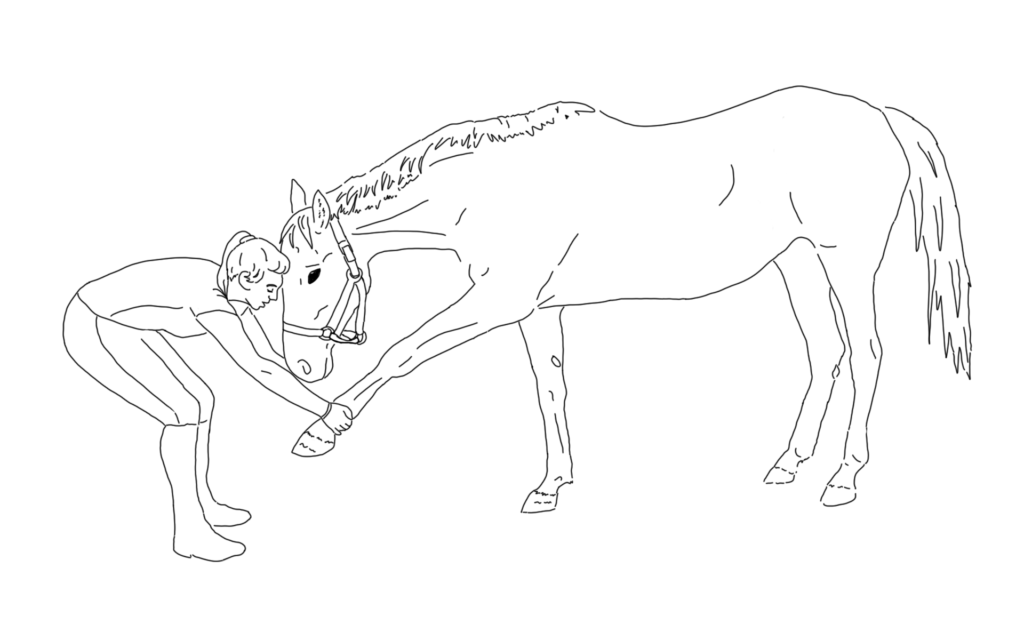
Un cheval qui vit un inconfort permanent ou intermittent mais régulier dans un ou deux pieds antérieurs aura à terme, par le recours à des postures et une démarche antalgiques, des tensions musculaires hautes. Elles-mêmes entraineront, comme pour Puccini, des fixations ostéopathiques nécessitant une intervention extérieure.
La Seaver peut aider le cavalier à mesurer objectivement une réduction de mobilité des épaules du cheval sur un même type de travail dans les mêmes conditions de sols. Un cheval “noué du devant” aura plus de mal à déployer son geste des antérieurs, monter son garrot, réduisant ainsi son rebond et l’amplitude de son déplacement vertical.
L’outil développé par Seaver propose une comparaison du rebond au fil des séances ainsi que l’étude de la symétrie du trot. Cela peut révéler, si elle n’est pas optimale et évolutive, un défaut de mobilité du cheval. Ceci dit, il faut garder en tête que le rebond peut varier en fonction du type de travail (dans une attitude ronde et basse, les valeurs de rebond seront différentes de celles d’un travail rassemblé) et en fonction du terrain (un terrain profond entraîne un rebond faible quand un terrain souple ou dur entraîne un rebond plus important). Cette objectivation d’un défaut de locomotion, effectuée par la comparaison des données Seaver sur plusieurs séances dans les mêmes conditions, vou犀利士 s permettra d’anticiper le point de “rupture”. Autrement dit, d’éviter le moment où le tissu sur-sollicité décompense et passe dans la phase clinique, révélée par une boiterie.
